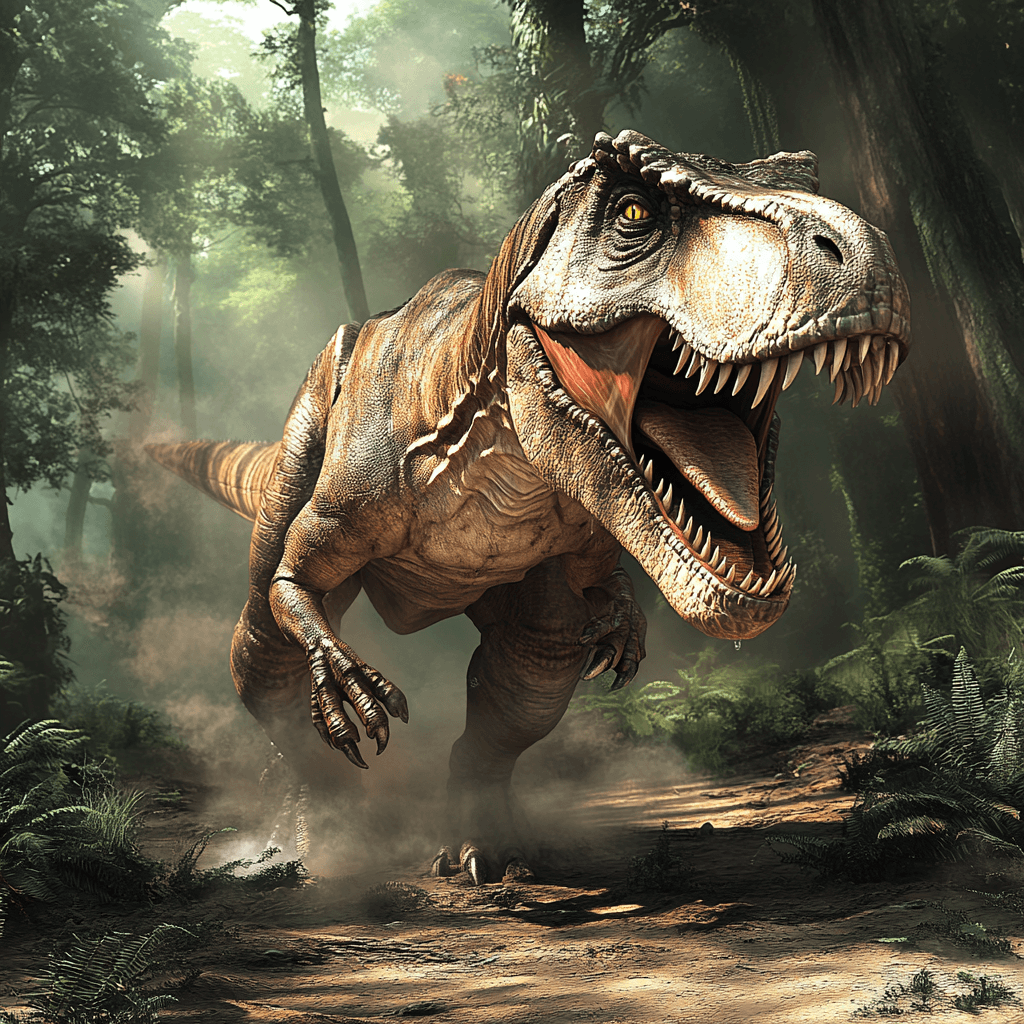Welcome to a captivating exploration of Velociraptor Facts For Kids! Dive into the exciting world of these ancient predators and discover fascinating information that will spark the imaginations of young and curious minds. From the revelation of Velociraptors having feathers to their impressive hunting abilities and intelligence, this post is filled with intriguing details that shed light on the evolutionary history and unique characteristics of these dinosaur species. Join us on a journey through time as we unravel the mysteries of Velociraptors, inspiring a love for paleontology and scientific discovery in children. Let’s embark on this educational adventure together and learn why Velociraptors continue to captivate us with their remarkable feats and behaviors from the distant past.
Velociraptor Facts For Kids
1. Velociraptors Had Feathers
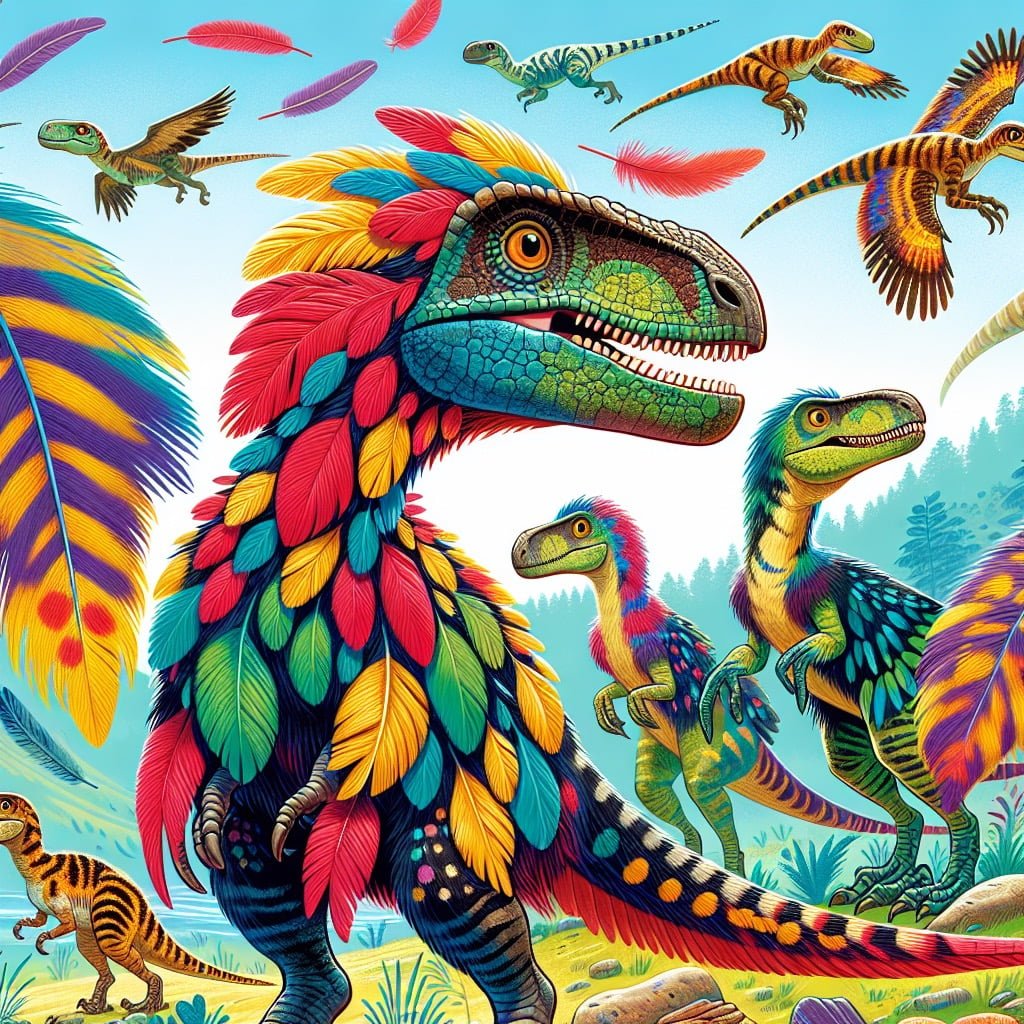
For younger kids: Velociraptors had colorful feathers, just like modern birds!
For older kids: Recent scientific discoveries have revealed that velociraptors were covered in feathers, indicating a closer relation to birds than previously believed.
Detailed explanation:One fascinating Velociraptor fact for kids is that these ancient creatures actually had feathers. While many children are familiar with Velociraptors from popular movies like Jurassic Park, where they are depicted with scales and no feathers, the truth is that these dinosaurs were likely covered in feathers.
Evidence for this comes from fossilized remains that show clear markings where feathers would have been attached to the Velociraptor’s body. These feathers would have been more akin to the downy feathers of modern birds, rather than the flight feathers seen on birds like eagles or penguins. Scientists believe that these feathers would have helped Velociraptors regulate their body temperature, attract mates, and perhaps even provide some level of insulation.
The presence of feathers on Velociraptors fits into the broader understanding of dinosaurs as closely related to modern birds. In fact, birds are considered living descendants of dinosaurs. The discovery of feathers on Velociraptors has helped to bridge the gap between these two groups, providing further evidence for the evolutionary link between dinosaurs and birds.
So, next time a child is learning about Velociraptors, they can be excited to know that these fearsome predators were actually quite bird-like in appearance. This fact can spark their interest in paleontology and evolution, encouraging them to learn more about the fascinating world of dinosaurs and how they are connected to the animals we see today.
Velociraptor Facts For Kids
2. Velociraptors Were Only About the Size of a Turkey
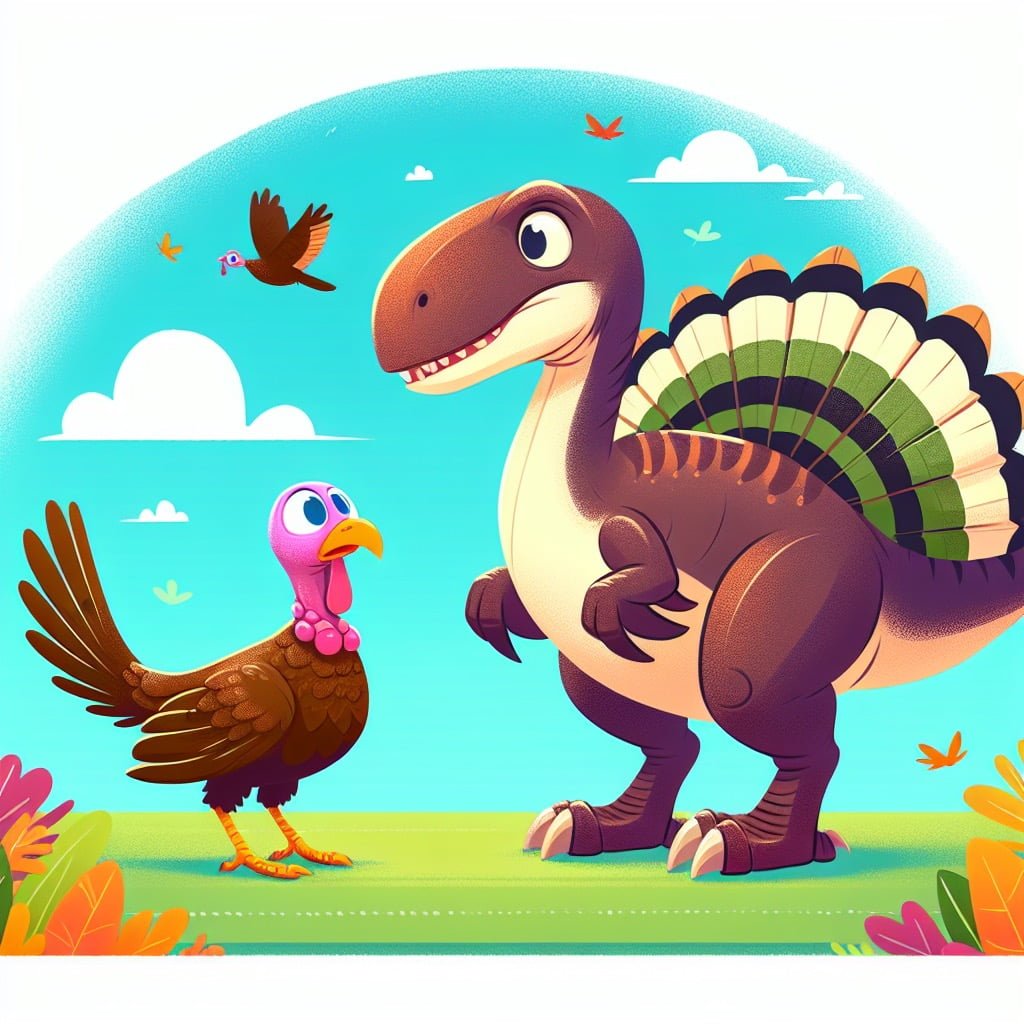
For younger kids: Velociraptors were small and fast, like a turkey!
For older kids: Despite their fearsome reputation, velociraptors were actually quite small, standing at around 1.6 feet tall and 6.8 feet long.
Detailed explanation:Velociraptors, despite their menacing portrayal in popular culture, were actually relatively small dinosaurs, only about the size of a turkey. These creatures belonged to the dromaeosaurid family, which also includes other raptors like Deinonychus and Utahraptor. Velociraptors walked on two legs and had long, curved claws on their feet that they likely used for hunting and slashing prey.
One of the most fascinating Velociraptor Facts For Kids is that they were not as large as they are often depicted in movies like Jurassic Park. In reality, they stood at just about 1.5 feet tall and 6 feet long, making them comparable in size to a turkey. Despite their small stature, Velociraptors were still formidable predators, with sharp teeth and a keen sense of smell and sight.
Velociraptors lived during the Late Cretaceous period, around 75 million years ago, in what is now Mongolia and China. They likely hunted in packs, using their intelligence and teamwork to bring down larger prey. Studies have also shown that Velociraptors had feathers, further connecting them to their modern bird relatives.
In conclusion, Velociraptors may have been small in size, but they were certainly not to be underestimated. These clever and agile dinosaurs were efficient hunters and played an important role in their ancient ecosystems. Learning about Velociraptor facts can help us better understand the diversity and complexity of the prehistoric world.
Velociraptor Facts For Kids
3. Velociraptors Had a Sickle-Shaped Claw
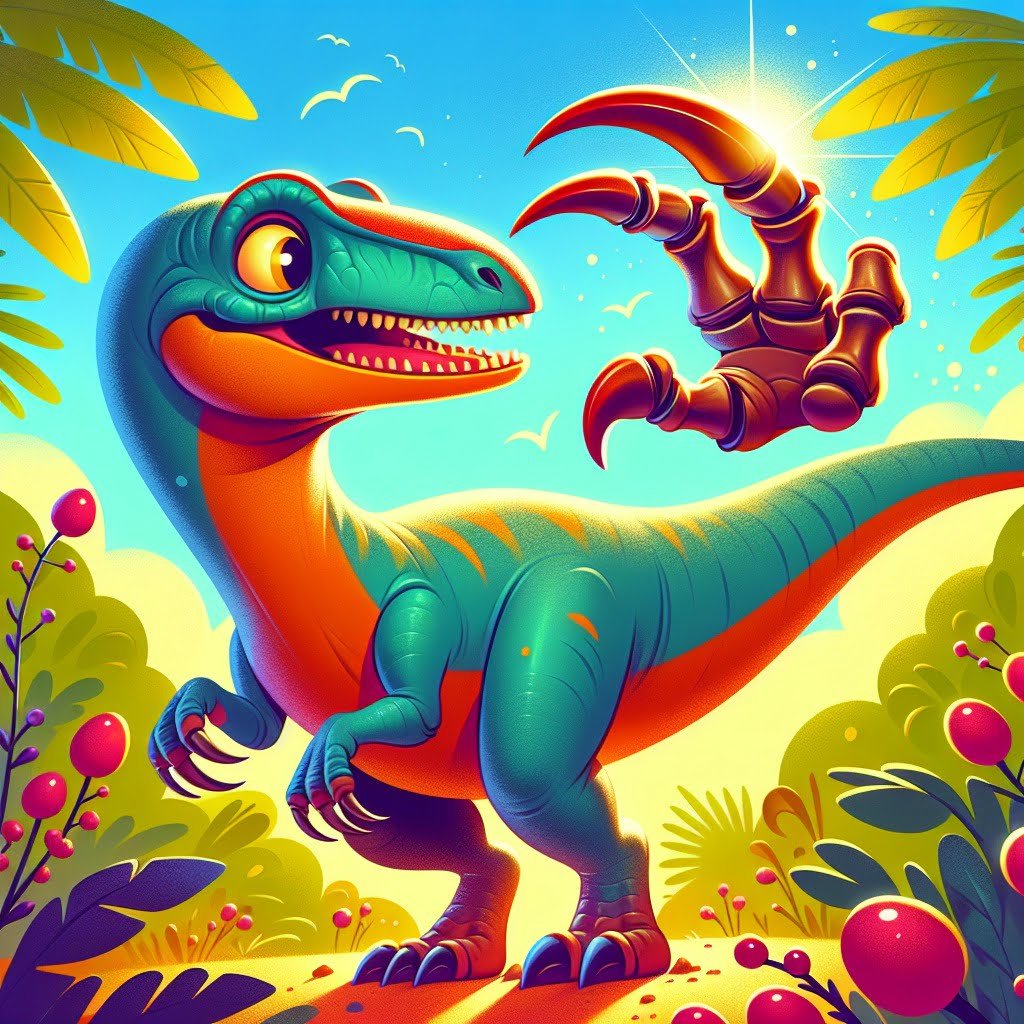
For younger kids: Velociraptors had a scary claw on their toes!
For older kids: The velociraptor’s distinctive killing claw, located on its second toe, was about 9.8 inches long and used to slash at prey with great precision.
Detailed explanation:One fascinating fact about Velociraptors, which is sure to capture the imagination of children, is that they had a sickle-shaped claw on each foot. This specialized claw, known as the “killing claw,” was located on the second toe and could grow up to approximately 6 inches in length. Velociraptors used this unique adaptation for hunting and capturing prey.
The Velociraptor was a small, agile dinosaur that lived during the Late Cretaceous period, approximately 75 to 71 million years ago. Its speed, sharp teeth, and the distinctive sickle-shaped claw made it a formidable predator. Scientists believe that Velociraptors primarily hunted in packs, using their coordinated efforts to take down larger prey.
The sickle-shaped claw of the Velociraptor was a deadly weapon. When attacking prey, the dinosaur would use its powerful leg muscles to kick and slash with its claw, inflicting serious injuries. This hunting strategy was crucial for the Velociraptor’s survival, as it allowed them to take down larger prey and compete with other predators in their ecosystem.
In addition to its hunting abilities, Velociraptors were also highly intelligent dinosaurs. Their brain-to-body ratio was similar to that of modern birds, suggesting that they were capable of complex behaviors and social interactions. This intelligence likely played a role in their successful hunting strategies and pack dynamics.
In conclusion, the Velociraptor’s sickle-shaped claw is a fascinating adaptation that showcases the unique characteristics of this dinosaur. By understanding Velociraptor facts for kids, we can paint a picture of these ancient predators and the world they inhabited millions of years ago.
Velociraptor Facts For Kids
4. Velociraptors Were Deft Hunters
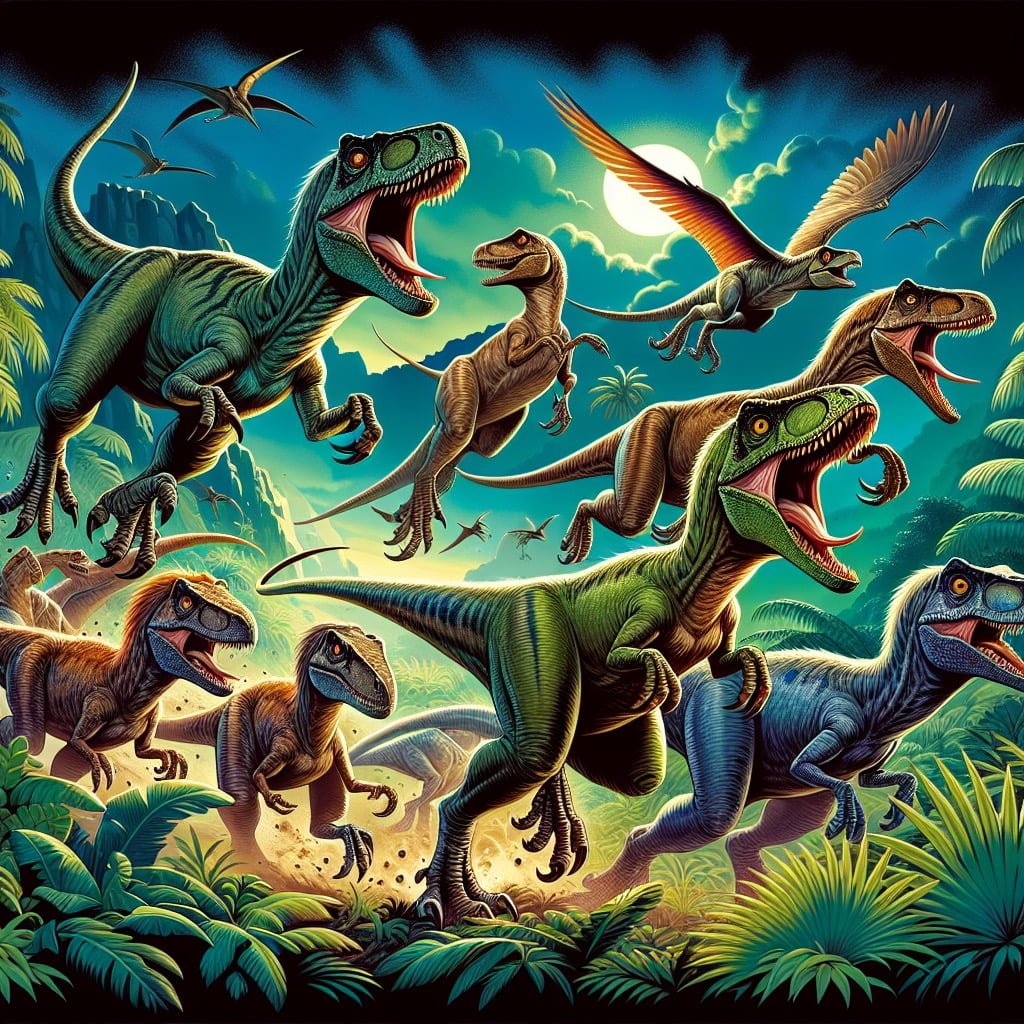
For younger kids: Velociraptors were super-fast and great at catching other dinosaurs!
For older kids: With their sharp claws, keen senses, and speed, velociraptors were highly skilled hunters, likely cooperating in packs to take down larger prey.
Detailed explanation:Velociraptors, one of the most well-known and popular dinosaurs, were indeed deft hunters. These creatures were small and agile, making them able to easily navigate through dense forests and catch their prey with precision. One of the most fascinating Velociraptor facts for kids is that they had sharp, curved claws on their feet that they used to slash and grab hold of their prey. These claws were their main weapon when hunting, allowing them to deliver swift and deadly attacks.
Another interesting aspect of Velociraptor hunting behavior is their intelligence. Recent studies have shown that Velociraptors had high levels of cognitive ability, similar to modern-day birds of prey. This intelligence would have allowed them to strategize and work together as a pack while hunting, increasing their chances of success.
In addition to their physical prowess and intelligence, Velociraptors also had keen senses that helped them hunt effectively. Their binocular vision allowed them to accurately judge distances and track fast-moving prey, while their sense of smell would have helped them locate potential meals from a distance.
Overall, Velociraptors were truly formidable hunters in the prehistoric world. Their combination of agility, sharp claws, intelligence, and keen senses made them well-equipped to take down their prey efficiently. By understanding these Velociraptor facts for kids, we can gain a deeper appreciation for just how skilled and successful these dinosaurs were in their hunting endeavors.
Velociraptor Facts For Kids
5. Velociraptors Were Highly Intelligent
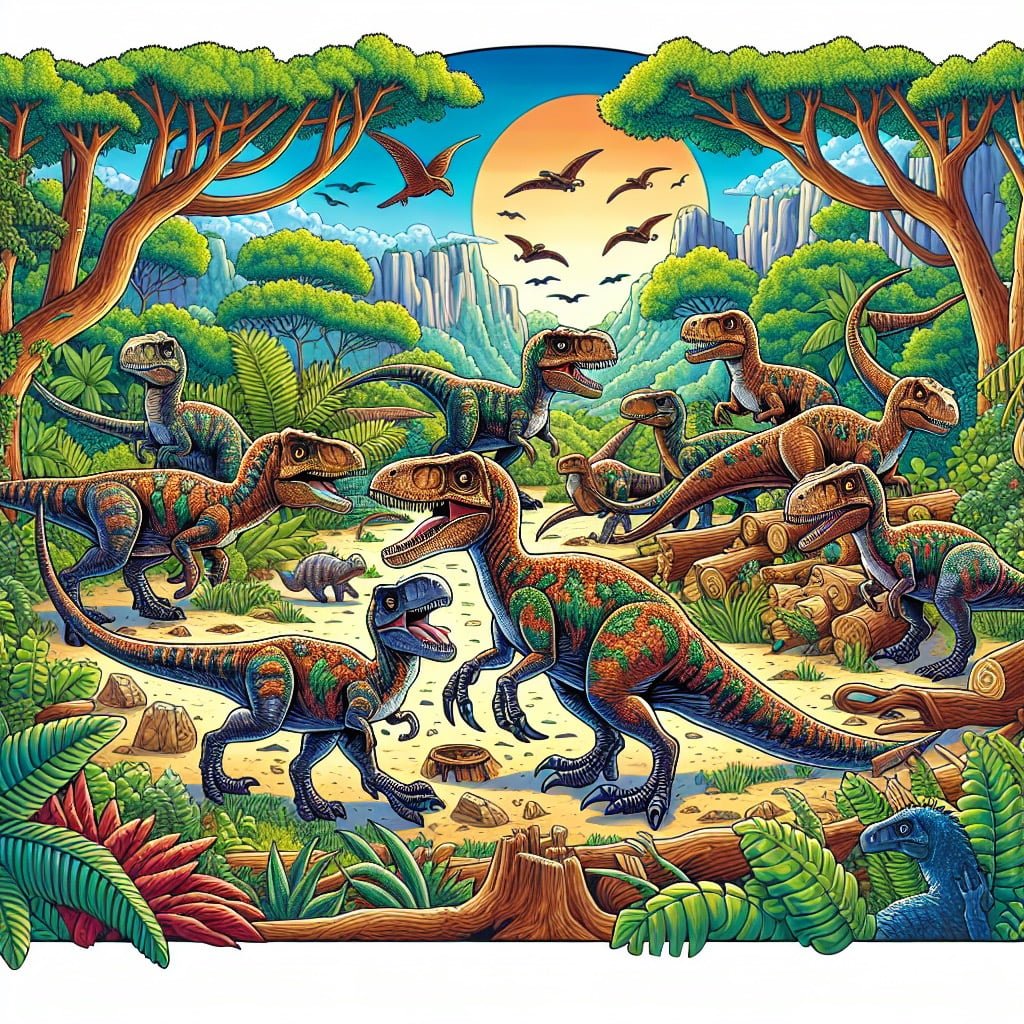
For younger kids: Velociraptors were really smart and could outsmart other dinosaurs!
For older kids: Studies indicate that velociraptors possessed large brains relative to their body size, suggesting high intelligence and problem-solving abilities.
Detailed explanation:Velociraptors, often portrayed in popular media as ferocious and bloodthirsty creatures, were actually highly intelligent dinosaurs. Contrary to their depiction in movies like Jurassic Park, these creatures were not massive in size – in fact, they were about the size of a modern-day turkey. Despite their small stature, Velociraptors possessed a large brain relative to their body size, suggesting that they were incredibly intelligent for dinosaurs.
One of the most fascinating Velociraptor Facts For Kids is that these dinosaurs were thought to be pack hunters, working together to take down larger prey. This type of cooperative behavior requires a certain level of intelligence, as it involves communication and strategy among the group members. Additionally, Velociraptors were believed to have had keen senses, including sharp eyesight and hearing, which would have been essential for hunting and avoiding predators.
Another piece of evidence supporting the intelligence of Velociraptors is the discovery of a fossilized Velociraptor hand with a curved claw. This claw was likely used for hunting and may have been used in a similar manner to how modern-day birds of prey use their talons. The precision and purposeful design of this claw suggest a level of intelligence and adaptability in Velociraptors that is both impressive and intriguing to scientists.
In conclusion, Velociraptors were not just mindless killing machines, but rather intelligent and adaptable creatures that exhibited complex behaviors. By studying Velociraptor fossils and behavior, scientists can gain insights into the intelligence and social dynamics of these fascinating dinosaurs.
Velociraptor Facts For Kids
6. Velociraptors Had Stereoscopic Vision
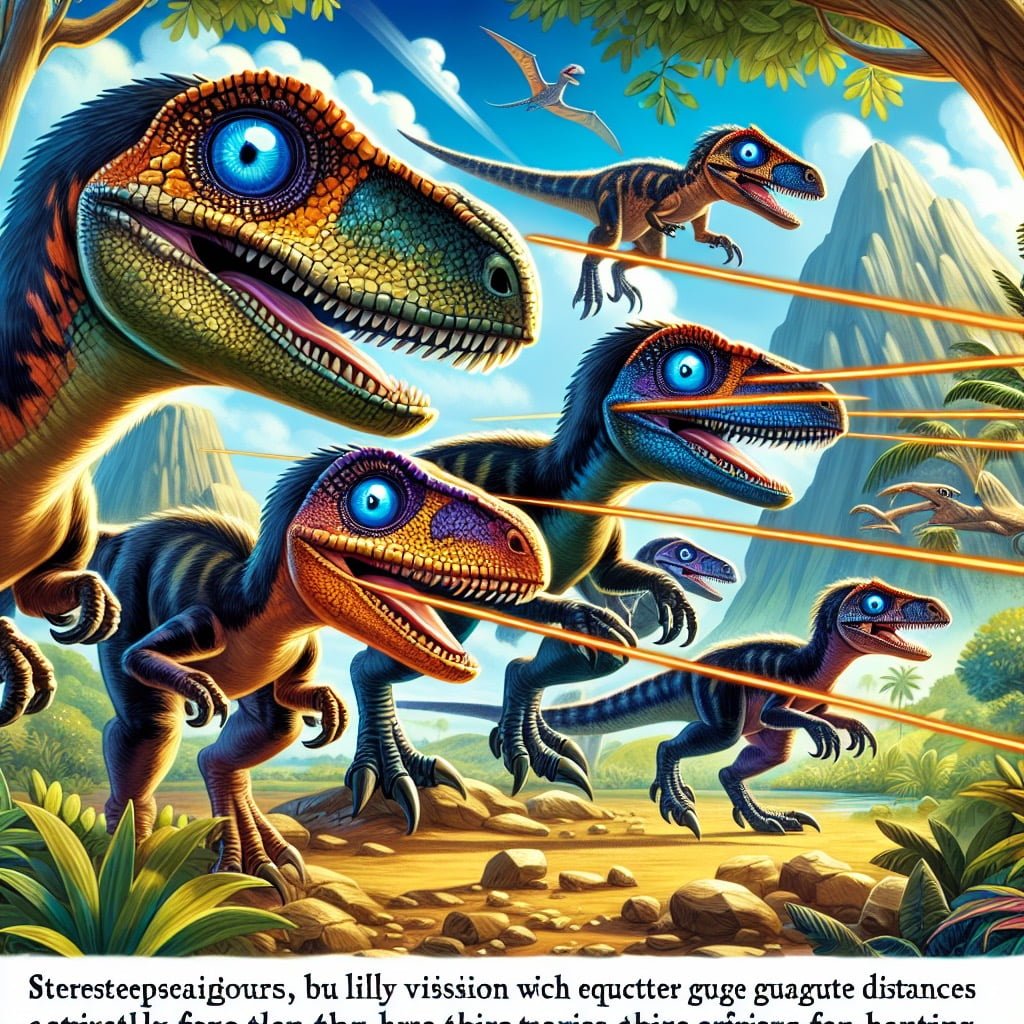
For younger kids: Velociraptors had eyes in the front of their heads, like us!
For older kids: With eyes positioned in the front of their skulls, velociraptors had stereoscopic vision, allowing them to judge distance accurately and target their prey with precision.
Detailed explanation:Velociraptors, one of the most iconic dinosaurs of the Mesozoic era, were small, feathered theropods that lived around 75 million years ago. One fascinating aspect of these creatures is their ability to perceive depth through stereoscopic vision. Stereoscopic vision is the ability to see an object in three dimensions, allowing for better depth perception and coordination. This was a crucial adaptation for velociraptors as they were carnivorous predators that relied on precise and accurate strikes to capture their prey.
Recent research and fossil evidence have provided insights into the visual capabilities of velociraptors. Scientists have discovered that these dinosaurs had forward-facing eyes, which is a key feature for stereoscopic vision. Having eyes positioned in the front of the skull allows for overlapping fields of view, enabling the brain to create a single, three-dimensional image. This would have been particularly advantageous for velociraptors when hunting, as it would have helped them accurately judge distances and positions of potential prey.
Furthermore, the size of the optic lobes in velociraptor skulls suggests that they had well-developed visual processing centers in the brain. This indicates that velociraptors not only had the physical adaptations for stereoscopic vision but also had the neural capability to process and interpret visual information efficiently.
In conclusion, the presence of forward-facing eyes and well-developed optic lobes in velociraptor skulls provides strong evidence that these dinosaurs possessed stereoscopic vision. This adaptation played a crucial role in their predatory lifestyle, allowing them to be efficient and deadly hunters.
Velociraptor Facts For Kids
7. Velociraptors Lived During the Late Cretaceous Period
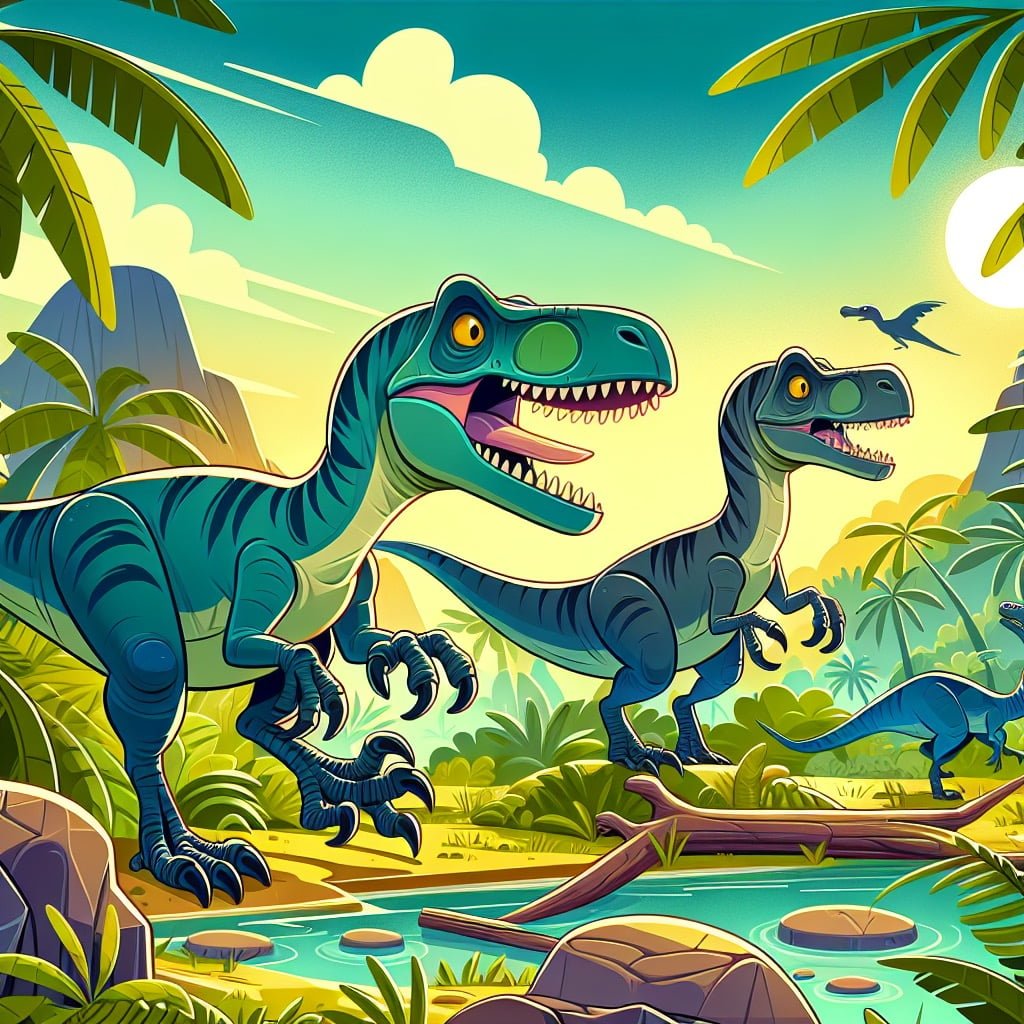
For younger kids: Velociraptors lived a very, very long time ago!
For older kids: Velociraptors roamed the Earth around 75 to 71 million years ago during the Late Cretaceous period, alongside other famous dinosaurs like Tyrannosaurus rex and Triceratops.
Detailed explanation:Velociraptors were a species of small, carnivorous dinosaurs that lived during the Late Cretaceous Period, around 75 million years ago. Despite their fierce reputation, Velociraptors were actually quite small, measuring only about 6 feet long and 2 feet tall at the hip. They weighed roughly 30 pounds, making them similar in size to a modern-day turkey.
One of the most fascinating Velociraptor facts for kids is that these dinosaurs were incredibly agile and quick on their feet. They had long, slender legs that allowed them to run at high speeds, making them efficient hunters. Velociraptors also had sharp claws on their hands and feet, which they used to grasp and immobilize their prey. Additionally, their jaws were filled with sharp, serrated teeth that were perfect for tearing flesh.
Despite their small size, Velociraptors were intelligent hunters that often worked together in packs to take down larger prey. This behavior is depicted in the popular movie “Jurassic Park,” although the film exaggerated the size and ferocity of these dinosaurs for dramatic effect.
In conclusion, Velociraptors were fascinating creatures that roamed the Earth millions of years ago. By learning more about these dinosaurs, kids can gain a deeper understanding of the diversity of life that existed during the Late Cretaceous Period. Velociraptor facts for kids can help spark an interest in paleontology and the study of prehistoric life.
Velociraptor Facts For Kids
8. Velociraptors Were Swift Runners

For younger kids: Velociraptors were as fast as some of the fastest living animals today!
For older kids: With long, powerful legs, velociraptors could run at speeds of up to 40 miles per hour, making them formidable predators on the prehistoric landscape.
Detailed explanation:When it comes to Velociraptor facts for kids, one of the most intriguing aspects about these dinosaurs is their speed. Velociraptors were swift runners, able to reach impressive speeds in order to hunt for prey and evade predators. Their long, powerful hind legs and lightweight build made them agile and quick on their feet.
Studies of Velociraptor anatomy have shown that they were well-adapted for running. Their long, slender legs provided leverage and power, while their flexible joints allowed for swift movement. In addition, Velociraptors had large, curved claws on their hind feet which helped them grip the ground as they ran, providing traction and stability.
It is estimated that Velociraptors could reach speeds of up to 40-50 kilometers per hour, making them formidable predators in their ecosystem. Their speed and agility would have allowed them to effectively chase down prey, such as small dinosaurs and other animals, and catch them with their sharp teeth and claws.
The ability of Velociraptors to run swiftly also likely played a role in their social behavior. It is believed that they hunted in packs, using their speed and coordination to take down larger prey or defend themselves against larger predators.
In conclusion, Velociraptors were not only fierce and intelligent predators, but also incredibly swift runners. Their speed and agility were key factors in their success as one of the top predators of their time.
Velociraptor Facts For Kids
9. Velociraptors Communicated with Each Other
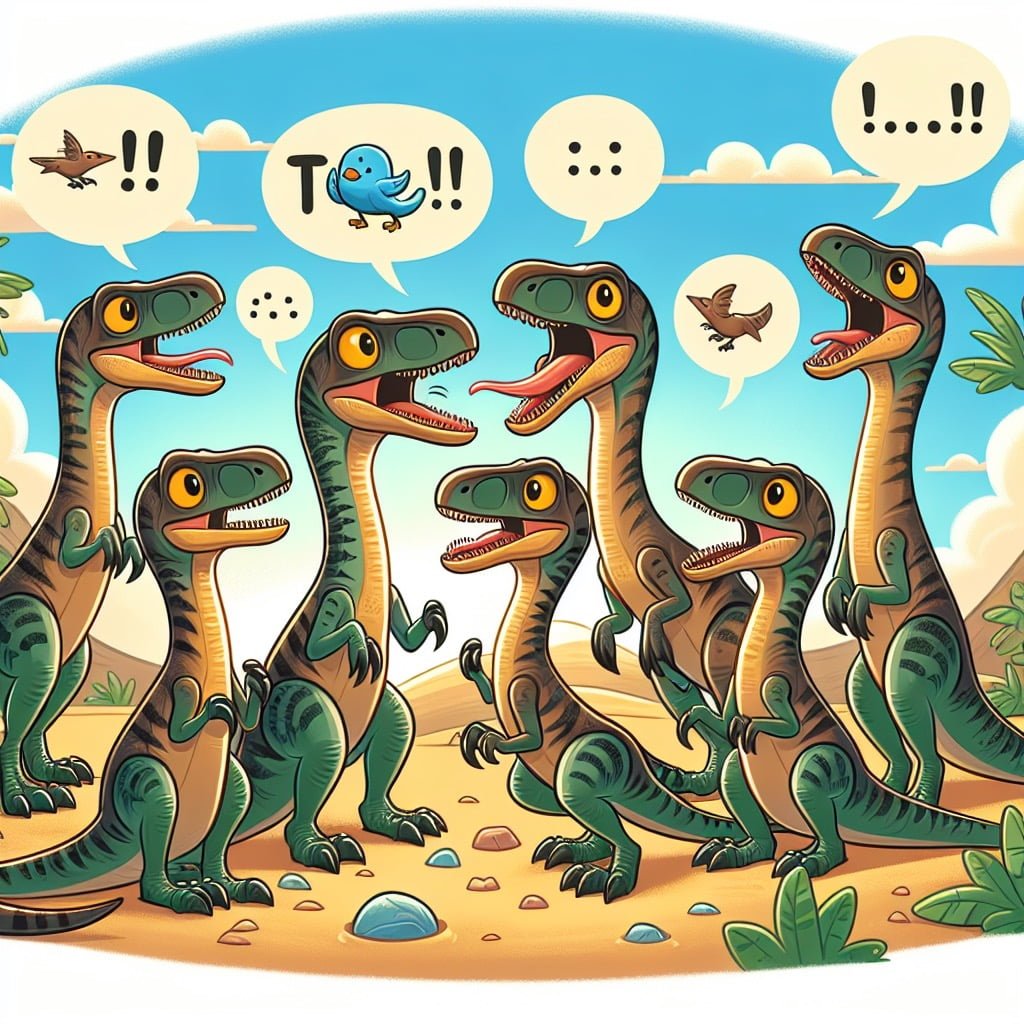
For younger kids: Velociraptors talked to each other with special sounds!
For older kids: Paleontologists believe that velociraptors used vocalizations and body language to communicate within their social groups, similar to modern birds and some reptiles.
Detailed explanation:Velociraptors were not only fierce predators, but they were also highly intelligent creatures capable of complex communication. Recent studies have revealed that these dinosaurs likely used a combination of vocalizations, body language, and even scents to communicate with each other.
One of the most fascinating aspects of Velociraptor communication is their use of vocalizations. Similar to modern birds, Velociraptors likely had a syrinx, a vocal organ that allowed them to produce a variety of sounds. These vocalizations may have served different purposes, such as establishing dominance within the pack, communicating danger, or coordinating hunting strategies. By analyzing the structure of the syrinx and comparing it to modern birds, researchers have been able to infer the range of sounds that Velociraptors may have been capable of producing.
In addition to vocalizations, Velociraptors also likely used body language to convey messages to one another. Studies of their skeletal structure and muscular attachments suggest that they had a high degree of mobility in their arms and hands, allowing them to make intricate gestures. By combining these gestures with vocalizations, Velociraptors may have been able to communicate more effectively and coordinate their actions as a group.
Furthermore, Velociraptors may have also used scents to communicate, much like modern reptiles and mammals. Scent glands located around their bodies could have been used to mark their territory, attract mates, or even recognize members of their own pack based on individual scents.
In conclusion, Velociraptors were not only formidable predators, but also highly social animals that relied on complex communication to survive and thrive in their environment. By understanding these Velociraptor Facts For Kids about their communication strategies, we can gain valuable insights into the behavior and social dynamics of these fascinating dinosaurs.
Velociraptor Facts For Kids
10. Velociraptors Were Warm-Blooded Dinosaurs

For younger kids: Velociraptors stayed warm like you do, even in cold places!
For older kids: Recent research suggests that velociraptors and their close relatives were warm-blooded, enabling them to maintain a constant body temperature and be active in various environments.
Detailed explanation:Velociraptors were warm-blooded dinosaurs, which means that they were able to regulate their body temperature internally, regardless of the external environment. This is a fascinating aspect of their biology, as it sets them apart from cold-blooded reptiles that rely on external sources of heat to regulate their body temperature.
One of the key pieces of evidence that supports the idea that Velociraptors were warm-blooded is their active hunting behavior. Warm-blooded animals require a lot of energy to sustain their high metabolic rates, which in turn allows them to be more active and agile compared to cold-blooded animals. Velociraptors were known for their speed and agility, traits that are more commonly associated with warm-blooded animals.
Another piece of evidence comes from the fossil record, which shows that Velociraptors had feathers. Feathers are typically associated with warm-blooded animals, as they help with insulation and regulating body temperature. In fact, scientists believe that Velociraptors may have used their feathers for display, camouflage, and regulating body temperature, much like modern birds do.
Overall, the evidence suggests that Velociraptors were indeed warm-blooded dinosaurs, a fact that adds to their mystique and showcases the diversity of adaptations that existed in the prehistoric world. Understanding Velociraptor facts for kids can help spark an interest in paleontology and evolution, ultimately leading to a greater appreciation for the incredible diversity of life that has existed on our planet.
Did You Know?
Velociraptors likely had excellent senses of hearing and smell, making them even more effective hunters in their natural environment.
Summary of Velociraptor Facts For Kids
In today’s fast-paced world, it’s important to find ways to engage and educate our children in a fun and exciting manner. That’s where learning about Velociraptors can come in! These fascinating creatures from the prehistoric era are not only captivating but also offer a wealth of knowledge that can spark curiosity and wonder in young minds.
By delving into the world of Velociraptors, children can learn about the incredible intelligence and adaptability of these ancient predators. They can discover how Velociraptors worked together in packs to take down larger prey and see how their behavior was similar to some of the smartest modern-day birds.
Studying Velociraptors can also provide valuable insights into the ecosystem of the prehistoric world, allowing children to understand the interconnectedness of different species and the balance of nature. By learning about these apex predators, kids can gain a better appreciation for the diversity and complexity of life on Earth.
Additionally, exploring the world of Velociraptors can inspire a sense of wonder and curiosity in children, igniting a passion for paleontology and scientific inquiry that can last a lifetime. So, if you’re looking for a fun and educational way to engage your kids, delving into Velociraptor facts is definitely worth a read!
Sources and additional information for Velociraptor Facts For Kids
WikipediaBritannicaSmithsonian National Museum of Natural History – DinosaursAmerican Museum of Natural History – DinosaursThe Dinosaur DatabaseThe Paleobiology DatabaseDinosaur National Monument (U.S. National Park Service)Jurassic Park InstituteBerkeley University of California – Understanding EvolutionDinosaurs – The Australian MuseumBBC Earth – DinosaursSmithsonian InstitutionNatural History MuseumAmerican Museum of Natural HistoryDinoLand UCMPThe Dinosaur MuseumBBC NatureDiscovery ChannelNational Science FoundationPaleontological Society


